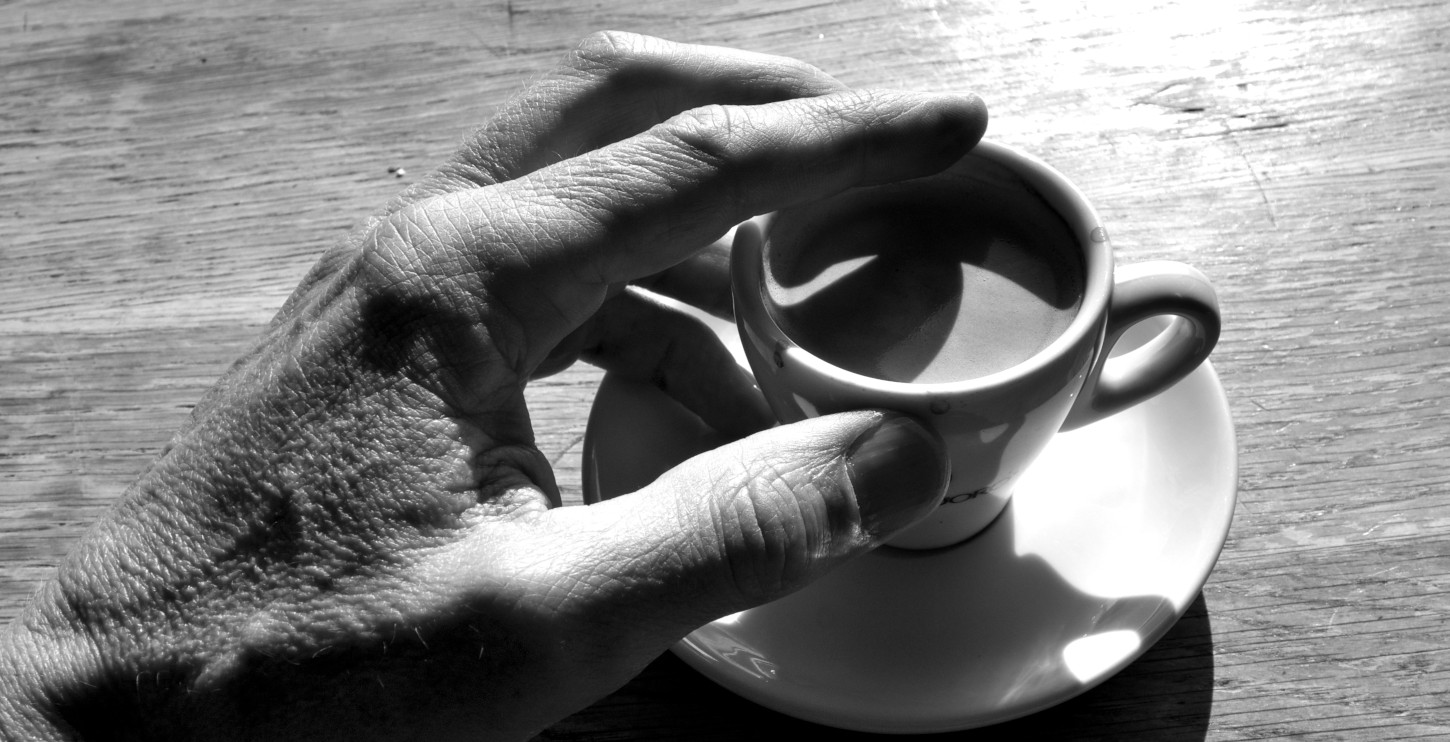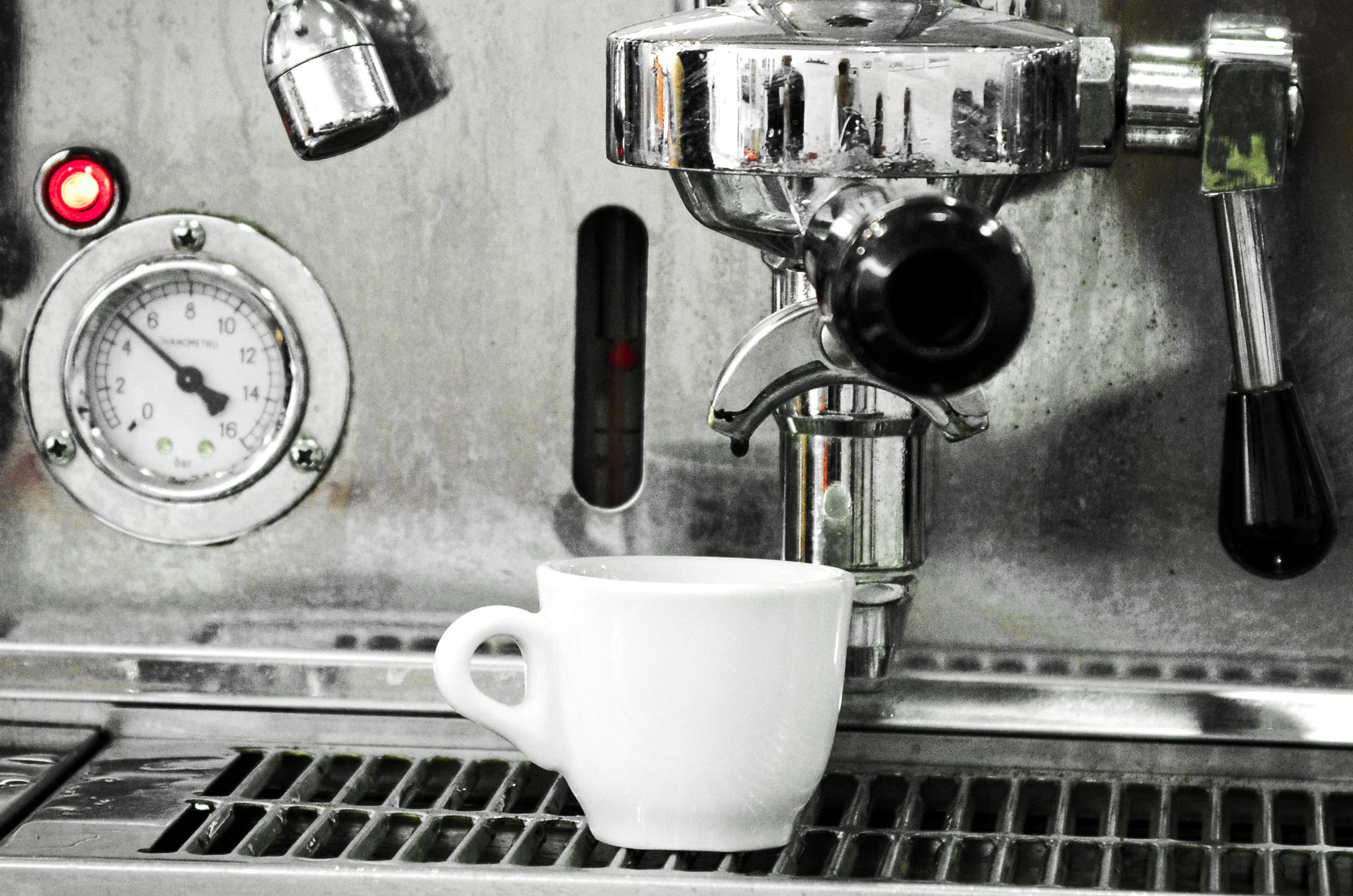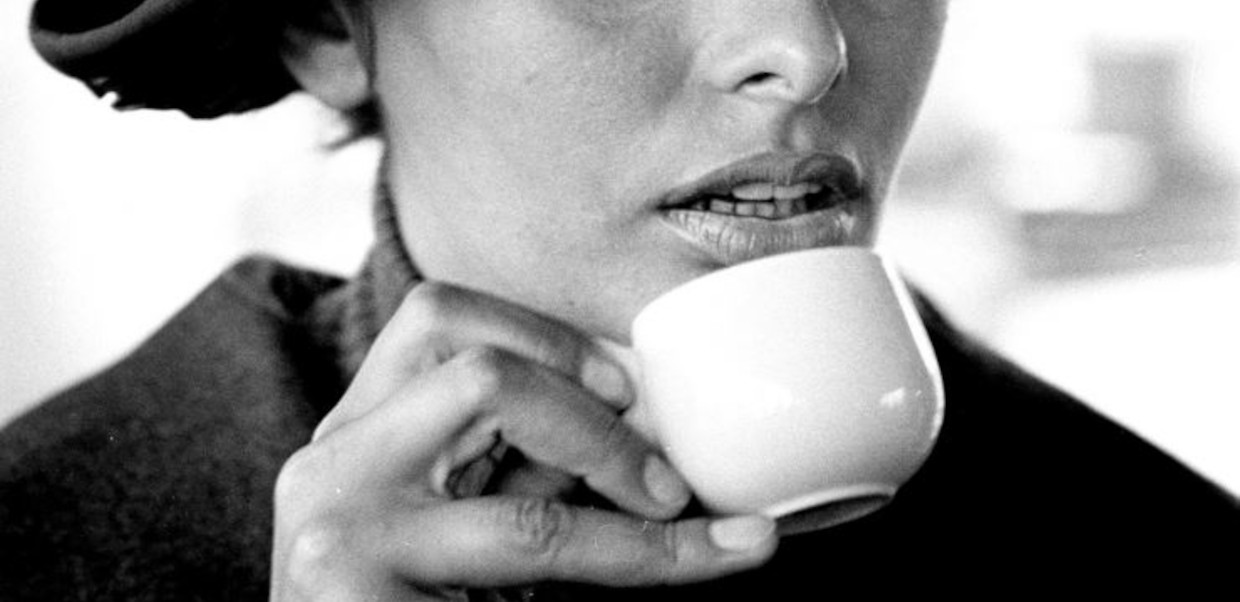Introduced in the 1500s to Italy, coffee has developed its own culture and has a place on the Mediterranean dining table ever since. Italian Coffee Culture and commensality is a tiny cup of coffee endowed with a variety of connotations, like friendship, family, affection and sharing. That is how we drink coffee in Italy.
In this Article
Italian coffee culture – Sit, Sip, Savor
Sharing for most of us, is part of the culture, the most authentic and most sincere manifestation of doing something for pleasure. A warm and sometimes noisy time spent together, sociable and chatty; making guests feel at home. It is the pride in showing and enjoying the pleasures of life.
Italian hospitality and coffee

“Have a coffee” is not a forced folkloric expression, but a loving reality to be proud of. It is rooted in ancient Greek-Latin hospitality traditions considered sacred, and the Mediterranean table culture. The beauty in sharing stories and traditions – a coffee and a bite or two over the tabletop.
Caffé pronounced as kaf-feh, is what we call coffee in Italy, usually it is espresso coffee.
Ospitalità is savored around the culture of the Italian table – obviously, something will be served with the coffee beside water:
cioccolatini – chocolates or biscotti – biscuits, brioche, fruits, nuts, some homemade sweet delicacy or from the pastry shop.
Savory tastes, like bread, cold cuts and cheeses … almost everything that is available in the kitchen can accompany a demitasse of coffee.
Offering a coffee with a small bite is a gesture of courtesy and welcome, which reflects the Italian tradition of hospitality and attention to detail. Ending a dinner with a moka pot is a pleasure.

The mouth is the seat of life: of speaking and eating, two gestures destined to coexist, in the sense that they cannot do without each other.
Conviviality and banquets – from the simplest to the most sumptuous – are made up of foods and words, of “eating” and speeches.
La Dolce Vita: on hedonism and death
La dolce vita today is an expression used to describe the sweet life; full of beauty, pleasures, and entertaining events – a life of love for food and celebrating the art of being together. In Italy, family gatherings are frequent, like saint’s days and festivals, centered around food and the extended networks of families.
Gabriella Cetorelli Schivo Superintendency for archaeological heritage of Lazio, wrote that, the table, the place where meals were consumed, assumed a symbolic and cultural meaning in the Roman imperial age. The moment of the banquet, a space in both real and allegorical time, where friendship, wine and song met, became the representation of the passage between the pleasure of life and the arrival of the end of existence.
History: The roman banquet
The first seed of this philosophy could be found in the famous words
Carpe Diem, quam minimum credula postero
, by Quinto Orazio Flacco, better known as Horace, (1st century BC) where the poet invited us to “enjoy” the present, without worrying about tomorrow. In truth, Horace urged to follow a life of moderation and elegant simplicity, never of the excess and recklessness staged in the rich imperial banquets.
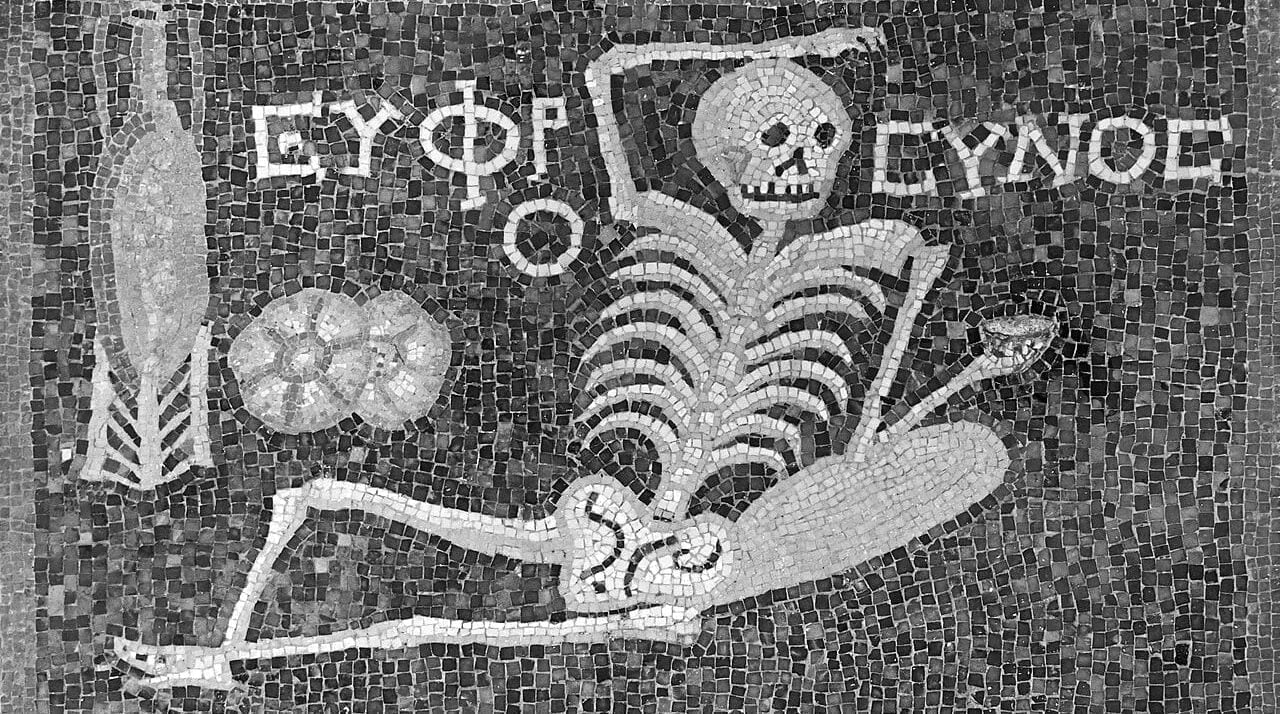
This theme, was often represented with skeletons in the mosaics of the tricliniums, and also found drawn on pottery with bony structures and writings such as: ‘Be cheerful, enjoy your life’,”Enjoy, as long as you are alive, tomorrow is uncertain” and “Life is a theater”, or the hedonistic: “Pleasure is the highest good”.
The funeral banquets
Starting from 313 AD, the date of the imperial edict which granted freedom of Christian worship, an interesting social phenomenon spread: the funeral banquets consumed on the venerated tombs of the martyrs on the day of the commemoration of their dies natalis (deposition date). These “refrigeria“, which consisted of a libation of wines or a real community meal, were conducted in an atmosphere of such a festive celebration that it almost became a rule for the faithful to spend entire days in
abundantia epularum et ebrietate
abundance of food and drunkenness,
as St. Augustine recalls with disappointment (Ep., XXIX, 2).

Already during the fifth century, however, under the moralizing thrust of the ecclesiastical authority, the phenomenon of food abuse gradually began to diminish, so much so that in the first half of the sixth century. Ennodius, bishop of Pavia, could thus exhort his fellow citizens: “Pray, miserable guests, for the many mourners: there will be as many lunches as there will be funerals” (Carm.,2,28).
From funerary reliefs and a good number of sarcophagi, we know that three rites were performed at the tomb: the burial, the sacrifice of a pig and the funerary banquet. The meaning is connected to the idea of eternal rest in the joy of the banquet in the belief that the one who has well deserved it, will be welcomed into the divine symposium. Excerpted from Margherita Bedello. Soprintendenza Archeologici di Ostia Antica, Roma. Ministero Beni e Attività Culturali, ‘ALIMENTAZIONE NELL’ITALIA ANTICA ,monografia on-line. L’iniziativa si inserisce nell’ambito della grande rassegna espositiva “Cibi e sapori nell’Italia Antica”
The joy of eating and drinking together is still part of the Italian lifestyle and of the Dolce vita.
Commensality: Eating and drinking like Italians do
Eating is a cultural expression. La buona tavola – the good table – is not just a euphemism for fine dining, it is the reflection of Italy’s convivial character. As time goes by and it is getting later and later, a coffee with friends can easily end up a dinner party. We all have heard our grandmothers and mothers say:
where one eats, all of us eat – add a chair
Commensality, in its literal sense, means eating at the same table (mensa). A wider, simple definition proposes that ‘commensality is eating with other people’.
To drink a moka, it takes at least two people: me and the moka
In this lighthearted comedy, the joke bares the deeply relational character of the gesture of drinking together – in spite of its nature being inevitably individual. This is true not only in relation to the coffee you ingest, but also and above all because it is typical (although not exclusive) of human societies to drink and eat collectively, by convivial forms that enrich the act with social and symbolic implications.
“We do not invite each other to eat, but to eat together”,
says the character of a convivial dispute by Plutarch. Sharing at the table (but, more generally, consume food together, since not always and not everywhere you eat sitting at the table) is the first way to represent community, the values we Italians live by and the relationships that exist within.

Even in conflicting aspects: life (and so the banquet that it represents) is not only agreement and solidarity, but also tension, conflict. At the table all this is expressed – immediately and effectively, given the centrality that food occupies in daily life: essential for living, food embodies and sums up the central values of existence.
Sharing food (or not sharing it at all) is the first way to show the relationship we have with the world and with others. The first value that a ‘convivio‘ communicates is that of absences: who is there, and who is not.
A positive relationship with food – means knowledge, reciprocity and attention – implies conviviality with table companions and also with the product, with the places, of which it is an expression of, with the cuisine who turned it into food. In this way it restores intelligence and depth to a fundamental gesture of our life, which we too often have been tempted to think as a trivial gesture. (M. Montanari, Il cibo come cultura).
HISTORY: Italian food culture and the Mediterranean dining table
The history of the Mediterranean Sea is the history of communications between the people and cultures from the lands surrounding it. Egyptian, Phoenician, Greek and Roman civilizations were some of the most ancient human civilizations , they had a major influence on the history and existence of cultures around the Mediterranean, and consequently are one of the key for understanding the development of Western civilization as we know it.

The Mediterranean has always created a unique situation of cross-road interaction, confirming the dynamic and changeable nature of food identities. Among these, the Italian food culture, born from the encounter between the Roman and a myriad of neighboring lifestyles.
Which gave birth to a new food civilization based on the one hand on bread (grain and cereals from Mediterranean Basin or/and The Middle East, Egypt and Mesopotamia), wine (9000 years ago China, later ancient populations that settled across the Caspian Sea Basin, the Near East and the Mediterranean Basin, like the Etruscan and Greek colonialists) and olive oil (Mediterranean Basin or/and The Middle East), symbols of civilization and agriculture and on the other hand, on meat, beer and butter, symbols of the “germanic or barbarian” civilization, linked to the forest more than to agriculture.
In Sicily during the middle ages, the region was colonized by Arabs which influenced food culture and introduced the use of coffee, spices and dried fruits to the region. This Arabic influence can still be found in the modern-day dishes from Sicily. Dried pasta and rice also was brought by Arabs, but only in the Renaissance rice gained popularity in Italy.

Finally from the Americas tomatoes and chili peppers – pivotal ingredients would enter Italian kitchens. There are many foods that are part of our culinary heritage today, corn (polenta), legumes, potatoes, pumpkins, squashes, pineapples, cacao and vanilla, these are just a few examples of the products, which do not originate in our territory but are now indispensable in Italy.
The Mediterranean has historically been a cultural and social intersection, exposed to diverse influences.
Historical processes of diffusion, migration, trade, and economic and political change are reflected in our food habits and preferences.
Today Cyprus, Croatia, Spain, Greece, Turkey, Morocco and Portugal have their Mediterranean Diet including bread, olive oil and wine recognized by UNESCO on the list of Intangible Cultural Heritage of Humanity. They state:
Eating together is the foundation of the cultural identity and continuity of communities throughout the Mediterranean basin.
It is a moment of social exchange and communication, an affirmation and renewal of family, group or community identity.
The Mediterranean diet emphasizes values of hospitality, neighborliness, intercultural dialogue and creativity, and a way of life guided by respect for diversity.
Women play an important role in transmitting knowledge of the Mediterranean diet: they safeguard its techniques, respect seasonal rhythms and festive events, and transmit the values of the element to new generations.
The principal aspects of the Mediterranean food ways include high consumption of unprocessed cereals, legumes, olive oil, fruits, and vegetables, and moderate consumption of fish, dairy products, like cheese and yogurt), and meat.

Mediterranean coffee
Coffee is a fundamental element of the Mediterranean diet and a daily habit of the people that inhabit this great geographical and cultural region.
As a stimulant it allows us to live trough long, hot days more actively and to stay awake longer on cool summer evenings. In fact, coffee is consumed to meet the needs dictated by the August heat: It transforms and takes on a cold look, it becomes iced coffee, coffee frappé, ice cream and granita.
Sicily’s Granita:
Sicily’s Mount Etna has ice and snow in its Bergschrunds (cracks) lasting through the hottest summer days. Two thousand years ago, Greek and Roman inhabitants used lumps of the volcano’s snow to chill their wine. Several centuries later, the Arabs chilled the sweet fruit and rose water syrups the sharbats, with it.
After the 16th century discovery that ice and salt together had a freezing effect, Sicilians began to enjoy flavored granular shards of ice churned in a pozzetto (a wooden vat containing a metal bucket surrounded by ice and salt) now best known as granita.
Eating granita is one of the ways Sicilians cope with the relentless heat of their summers. It’s enjoyed with a brioche col tuppo (a distinctly-shaped sweet bun said to resemble the chignon Sicilian women traditionally wore their hair in) for breakfast.

Granita is made of frozen coffee, sugar water, strong espresso, vanilla and lightly sweetened whipped cream. Some add chocolate shavings or alcohol, like bourbon to the delicacy.
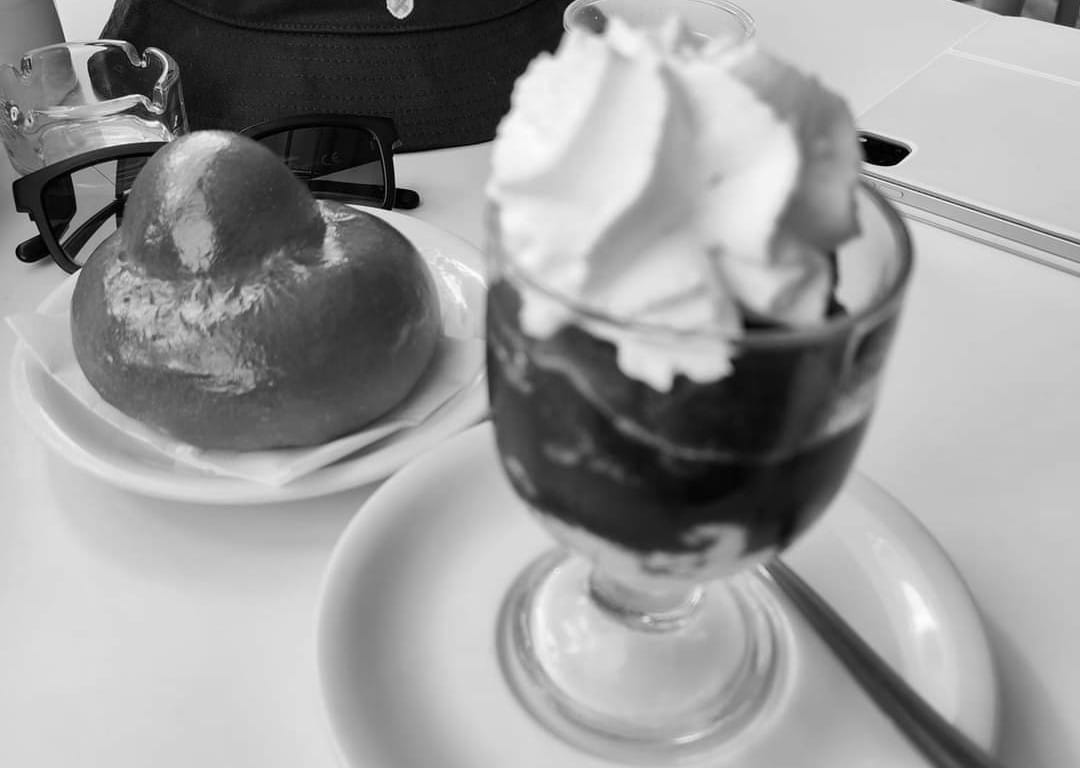
Cold coffee is a thirst-quenching afternoon pick-me-up when the sun really starts to scorch.
The Granita di Caffé and Affogato – an espresso with vanilla ice cream and whipped cream – this is how we Italians turned our beloved espresso into desserts too. Beside sugar, also spices from far away lands are added to the coffee cuisine of the South, like licorice, cinnamon, anis and cloves.
Finally, southern Italian coffee is aromatic and spicy, as per dictates of sensorial habits and traditional products such as pecorino or caciocavallo (traditional cheese) and other typical dishes of the Mediterranean cuisine. Like other foods found in the Mediterranean diet coffee is an antioxidant, same as olive oil, tomatoes and wine.
The healthy Mediterranean diet
In the 1950s, along came the “discovery” of the Mediterranean diet! This traditional diet was found to be a healthy (possibly the healthiest) way of eating — as local people knew — and American epidemiologist Ancel Keys told it to the world. There were problems with his work, but ensuing decades of study confirm the benefits of the Mediterranean diet: Olive oil, fish, vegetables and fruit; Even coffee, wine, and chocolate — all healthy in moderation!
Farmer families traditionally ate nearly completely the food of their land, always in season, nothing industrial or commercial. Bread was made in the communal oven, maybe every three days or even once a week, to grow stale and become the backbone of so many dishes that would sustain the family, along with the seasonal vegetables, and the olive oil or butter.
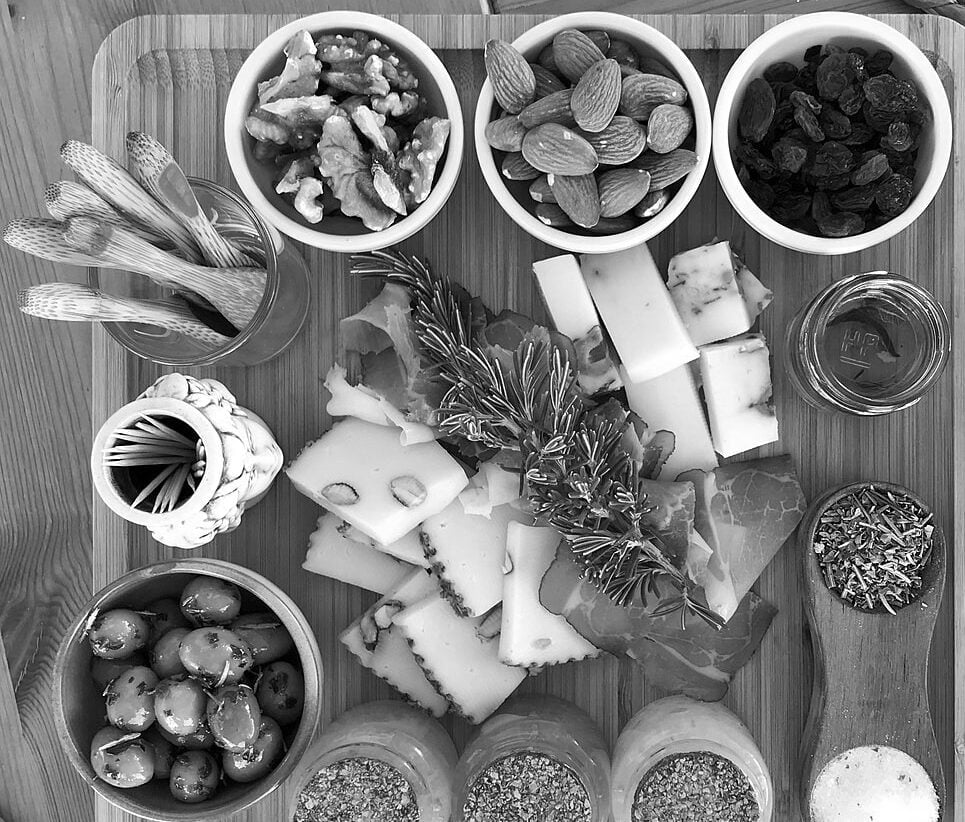
Occasional long, sensual meals are lavished with care and attention; so, are small nibbles, a snack of cheese (from parmigiano to mozzarella), a bite of cake or pastry — this several times a day joy — is a crucial part of the culture and vitally, important to a happy life in Italy.
After the austerity of the second world war, Italy began to regenerate. People were enjoying their lives and especially their new way of eating coming from America. There were new foods advertised— modern foods, commercial foods, processed foods, packed food.
Science suggested that the way to eat now was to give up old-fashioned olive oil for modern margarine and to eschew vegetables, beans, and pasta for more meat. Cultures lose their traditions at their own peril, especially food wise.
Not only is pleasure and tradition changed, but weight problems and new health concerns also arose, so today. And not only in Italy… And again the wind changed: Some people now follow a vegetarian, vegan or macrobiotic diet, because they want a more ecological and sustainable lifestyle, and one that doesn’t prejudice animals.
HISTORY: How coffee reached the Italian dining table
Italian cuisine, has been profoundly influenced by its geographical position as a crossroads of the Mediterranean, whose commercial and political interactions have made intercultural encounters precious, further enhancing products that have always made our country unique.
Despite Italy being the home of espresso coffee, no coffee is grown here. (not yet!)
Coffee beans come from a plant belonging to the genus Coffea of the Rubisceae plant family. Italy’s coffee culture dates back to the sixteenth century, when the first beans arrived in Venice on one of the trading ships from in the Middle East, likely originating in what is now Ethiopia (or perhaps Yemen) when legendary goats were dancing after eating the cherries. The mythical origins of coffee are steeped in legend and topped with a creamy dollop of speculation.

Although the power of Venice was already declining, historians agree that Venetian merchants were already importing coffee in 1695. The beans, which were loaded at the port of Mocha in the Arabian Peninsula, were unloaded at Venezia and sold through pharmacies for medicinal purposes. There is also evidence, that Arab merchants would drink coffee in Venice.
The ‘baptism of coffee’

Legend has it, that at first the Catholic Church opposed coffee drinking. As it was a “infedel” drink, a number of pope’s advisers appealed to Pope Clement VIII to ban the black brew. In 1594, the pope initiated an alliance of Christian European powers to take part in the war with the Ottoman Empire. Pope Clement tried “Satan’s drink”, or “bitter invention of Satan”. However, upon tasting coffee, Pope Clement VIII declared: [Here there are two sentences, a humorist and a political incorrect one.]
“Questa bevanda del diavolo è così buona… che dovremmo cercare di ingannarlo e battezzarlo.”
“This devil’s drink is so good… that we should try to deceive him and baptize it.”
Pope Clement VIII ?
and the other one:
“Why, this Satan’s drink is so delicious that it would be a pity to let the infidels have exclusive use of it.”
Pope Clement VIII ?
Clement allegedly blessed or baptised, the bean because, to him it appeared better for the people, than alcoholic beverages. It is not clear whether this is a true story, but it may have been found amusing at the time. The year often cited is 1600, the same year the Pope Clement VIII in a case of Inquisition presided the trial for heresy of Giordano Bruno, who was burned at the stake.
Some scholars believe coffee arrived in Naples earlier, from Salerno and its Schola Medica Salernitana, where the plant came to be used for its medicinal properties in the 14th century.
The popularity of coffee grew rapidly in Italy, not only among the aristocracy, who drank it in their drawing rooms, but also among the folk.
Coffee was sold by street vendors together with lemonade and chocolate drinks. Soon, Italians learned how to roast coffee beans and began drinking coffee at home and at the botteghe del caffè (coffee houses), later called Italian bars.
The Ottoman coffeehouses, where they first where criticized. Moralists in Italy called attention to their all-too-evident “oriental” derivation, suggesting that, coffeehouses were dens of iniquity, gambling, prostitution, and pederasty.

Vienna was among the first European cities, that appreciated this black drink so much that the Kaffeehaus (Viennese café) were dedicated to coffee and pleasure, at the end of the 17th century. In 1683 the first coffee shop in Italy was opened in Venice under the porticoes of St. Mark’s Square.
Pietro Longhi, the Venetian old master, in many of his pictures presenting life and manners in Venice during the years of her decadence, shows the consume of coffee at elegant homes and coffeehouses.
Carlo Goldoni was a lover of coffee, a regular frequenter of coffee houses of his time, from which he drew inspiration for his works. ‘The Coffee Shop’ (La Bottega del Caffè 1750), a comedy by Goldoni, one of Venice’s most famous playwrights, was first performed in 1750 and provides a flavor of those coffee shops and how their customers drank coffee.
Comedy of bourgeois Venice, satirizing scandal and gambling, vice and virtue alike.
Goldoni, in the comedy The Persian Wife, gives us a glimpse of coffee making, the Turkish way, in the middle of the eighteenth century. He puts these words into the mouth of Curcuma, the slave:
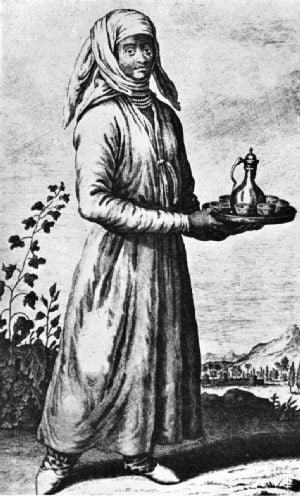
While putting forth its leaves on one side, upon the other the flowers appear; Born of a rich soil, it wishes shade, or but little sun. Planted every three years is this little tree in the surface of the soil. The fruit, though truly very small, Should yet grow large enough to become somewhat green. Later, when used, it should be freshly ground.
Here is the coffee, ladies, coffee native of Arabia, And carried by the caravans into Ispahan. The coffee of Arabia is certainly always the best.
Kept in a warm and dry place and jealously guarded. But a small quantity is needed to prepare it. Put in the desired quantity and do not spill it over the fire; Heat it till the foam rises, then let it subside again away from the fire; Do this seven times at least, and coffee is made in a moment.
Venice’s Caffè Florian was Italy’s first cafe, but soon Milano, Rome, Turin, Genoa, Padua, Naples, Florence, Trieste were under the spell of coffee. A widely read pamphlet authored by a gastronome named Pietro Corrado helped spread the word, including in his booklet a song praising coffee as the drink of hospitality, friendship, and good wishes. (I could not find much information about this legendary man…). By the early 18th Century, elegant cafes were established and coffee was revered as a luxurious drink, enjoyed by aristocrats.
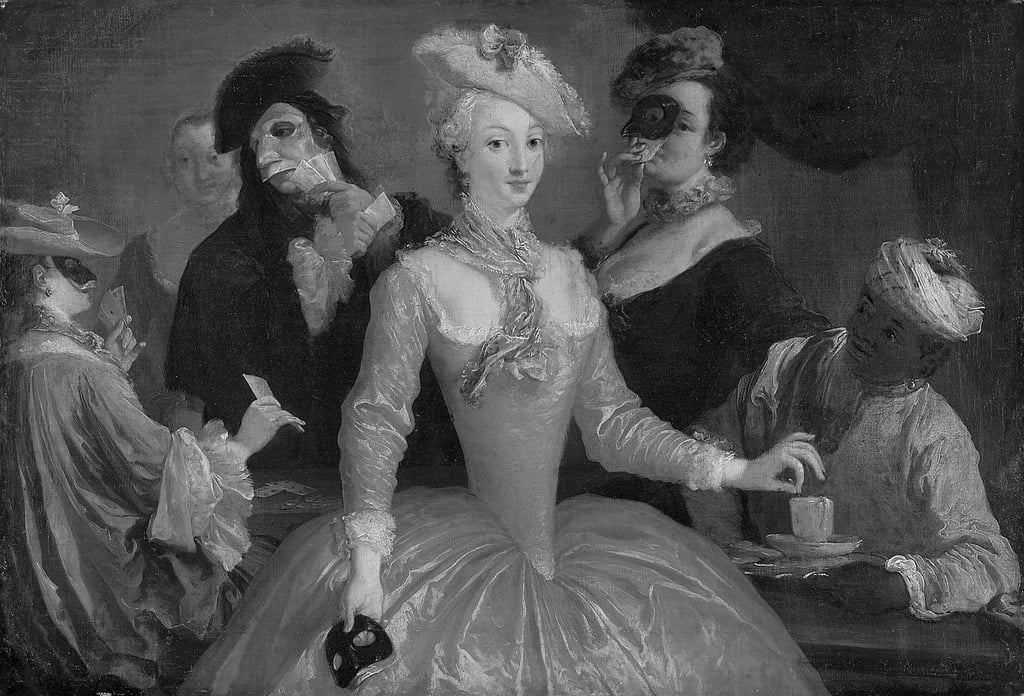
Coffeehouses proliferated to the point of becoming the defining feature of a newly emerging public sphere, it became a place increasingly associated with novelty and news. With “modern” activities like the reading of newspapers or books, with commerce, advertising, the promiscuous mixing of social classes, contemporary culture, and, of course, politics, particularly revolutionary politics.
Today, sipping a coffee is no longer an elite matter, quite the contrary.
Having a coffee is a frank moment between the public and the private, an informal meeting place in which to take a well-deserved break from the frenzy of the world.
The reason Italy is thought to be one of the coffee hot spots of the world is the fact that the espresso machine, the Napoletana and the Moka pot have been invented and perfected here.
Also baristas and roasters are masterful with their techniques. Each individual involved in the Italian coffee process takes pride in its work and follows rigorous practices to ensure each blend and cup is as tasty as the last.
Italian food culture — How to eat like ans Italian
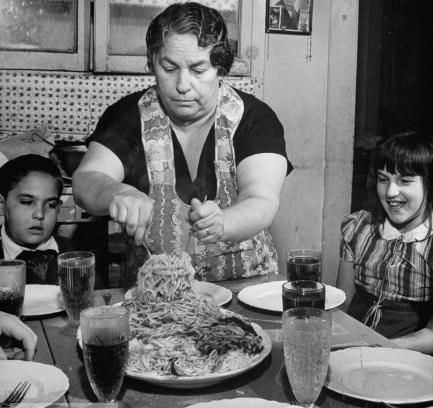
Commensality produces bonding. In apparently all cultures, eating the same food is equated with producing the same flesh and blood, thus making commensals more alike and bringing them closer to each other.
The perception that ‘you are what you eat’ seems universal. Meals regulate social life and individual behavior, both at a social and a biological level. Not all cultures eat around a table — far from it; but all cultures have rules and customs regulating the arrangement of commensals, distribution and sharing, as well as ‘table manners’.
Enjoying the pleasures of the table, the connection between the land and the taste buds, and the art of the meal, is sharing the good life, the dolce vita. In Italy and our travels showed us, everywhere else, commensality tastes like a warm embrace of friendship that feeds the soul.
Caffé and the structure of a typical Italian meal
We share the typical meal structure of the European Mediterranean region. Although traditions change, especially in recent decades and the lure of fast food is felt – dinner, cena, is traditionally the biggest, most important meal of the day.
At all times of the day, coffee is imperative.
You know that, as an Italian, that shot of hot, strong fragrant coffee is something you are entitled to as many times a day as needed. It might sound like a lot of coffee, but caffè is a tiny cup of espresso.
The joy in that demitasse of coffee is part of Italy’s appreciation of life’s small things.
Of course, as an Italian you have had only coffee and pastry so far, so you are ready for a good meal. Lunch, pranzo, starts anywhere between you 1:00 and 4:00pm, but since you’ll need to be ready for an aperitivo around 6:00pm, it’s best not to wait too long. Cena, dinner, rolls by around 8:00pm or 9:00 pm.
The art of the Italian meal
How we consume the first meal of the day is an Italian peculiarity. While it’s healthy to start the day with a rich, nutritious breakfast – the Italian breakfast features espressos – caffeine and sugary, yeasty carbs. A cornetto, croissant, at the bar; biscuits or a slice of mamma’s cake at home. Italians eat late, sometimes very late in the evening, that might be a reason that we are not really hungry in the morning.
We also drink cappuccino, the frothy milk with a shot of espresso, exclusively for breakfast, which sometimes happens late in the morning, very late. After lunch or dinner cappuccino is unpopular.

There is also the merenda or la merendina, “the little snack”, taken by kids between lunch and dinner. In the afternoon the merenda can be bread with all kinds of cured meats such as mortadella or salami, cheese, tomatoes, a little fried treat, or sweet Nutella chocolate on bread. There’s sweet and savory pastry— or gelato, ice cream or fruits. The word comes from the late Latin verb “merere” (deserve), and means “things you have to deserve”. Merenda is likely to be eaten by hard workers, children and students.
Lunch is usually a small dish, and dinner is richer. The main meal (dinner at home, as opposed to quick lunch at work) is traditionally a multi-course one. Restaurant menus feature antipasto, primo, secondo and side dishes, contorno. Dolce or dessert is usually small: fruits or ice cream. After lunch usually we have n espresso.

Antipasto, directly translated as “before the meal”, it varies in regions but traditionally consist of cured meat, olives, mushrooms, anchovies, various cheeses, pickled meat and vegetables in oil or vinegar.
Pasta is the food that speaks Italian. The plates of spaghetti, paccheri, linguine, macaroni, all sauced and tossed, are full of local flavor. Seafood, meats – vegetables cooked or raw … mozzarella or parmigiano, endless variations and tastes, are there daily. In the old days, formal dinners could also have an ‘intermezzo’ between the primo and secondo. It is possible to double or even triple-up primi and/or secondi at elaborate dinners as well, in which case the portions are reduced accordingly.
The modern, and increasingly common, exception to this kind of meal is the piatto unico, or ‘single dish’, that serves as both primo and secondo. It could be a rice, pasta, polenta or a pizza.
A primo could be of pasta, soup, polenta (as polenta e osei, polenta with roasted birds, polenta and sausages) or rice; and a secondo of meat, fish, vegetable, served with a contorno (vegetable side dish) or insalata salad.

And then a little dolce, tiramisu, panna cotta, cake or pie, panettone or pandoro (at Christmas) and the Colomba Pasquale (an Easter cake). A gelato or a sorbetto can be eaten too. Though there are nationwide desserts, popular across Italy, many regions and cities have local specialties.
Frutta e formaggio An entire course is dedicated to local cheeses and fresh seasonal fruit. The cheeses will be whatever is typical of the region.

Of course, caffè – short and strong – and a small chocolate or cookie might appear on the saucer. One of the most traditional customs around the Italian table has to be drinking an espresso coffee after every meal including dinner. Along with the coffee “i grandi” (the adults), often like to have a shot of liquor referred to as digestivo or “Ammazzacaffè”– literally translated as Coffee killer. Grappa, Sanbuca, herbal liquors and Limoncello are common Ammazzacaffè. Digestivo indicates that it is meant to ease digestion after a long meal.
Drinking caffè brings happy memories of seasons, of loved ones, of events. We drink so much caffè – so many days in of our lives – that each tiny tazzina (cup) is viewed as another opportunity to have a magic moment. A coffee after a meal gives that feeling of happiness despite the tragedy of the meal’s end.
“a tavola non s’invecchia”, meaning “at the table you do not age”.
Don’t rush through your meals, sit down, take your time and enjoy!
Habits, customs and inclinations of how we Italians celebrate the art of the table are individual and diverse, there is no real culinary rules, but there is codes, like passion, celebration and culture – savoring what is truly important.
La dolce vita is sitting down with family and friends to a meal made with love, allowing the world to slow for a bit; enjoying the simple magic of each other.

A cup of coffee can also be a private moment of calm in a busy world: a space where we can pause to think, linger, and oftentimes, create; right there all of it is there, in the little ceramic demitasse. Italian Coffee culture is all of this and more: the love for family, friends and oneself…
~ ○ ~
Keep exploring:
Works Cited & Multimedia Sources
The history of coffee is an extraordinary study. If you would like to learn more about it, I heartily recommend the book, All About Coffee, by William Ukers. Written in 1928, it will delight you with detail.
- Allegra World Coffee Portal www.worldcoffeeportal.com
- Artusi Pellegrino. Science in the Kitchen and the Art of Eating Well, transl. Murtha Baca and Stephen Sartarelli. 2003.
- Biderman Bob. A people’s history of coffee and cafés. 2013.
- Café Culture Magazine www.cafeculturemagazine.co.uk
- Carosello Bialetti: la caffettiera diventa mito https://www.famigliacristiana.it/video/carosello-bialetti-moka-mito.aspx
- Cociancich Maurizio. Storia dell’ espresso nell’Italia e nel mondo. 100% Espresso Italiano. 2008.
- Comunicaffe International www.comunicaffe.com
- Davids Kenneth. Espresso Ultimate Coffee. 2001.
- De Crescenzo Luciano. Caffè sospeso. Saggezza quotidiana in piccoli sorsi. 2010.
- De Crescenzo. Luciano. Il caffè sospeso.
- Eco Umberto. “La Cuccuma maledetta” in Agostino Narizzano, Caffè: Altre cose semplici. 1989.
- Global Coffee Report www.gcrmag.com
- Gusman Alessandro. Antropologia dell’olfatto. 2004.
- Hippolyte Taine, wrote in, Italy: Florence and Venice, trans J. Durand. 1869.
- http://www.archiviograficaitaliana.com/project/322/illycaff
- http://www.baristo.university/userfiles/PDF/INEI-M60-ENG-Public-Regulation-EICH-v4-1.pdf
- http://www.coffeetasters.org/newsletter/en/index.php/category/a-baristas-life/
- http://www.coffeetasters.org/newsletter/it/index.php/il-galateo-del-caffe/01524/
- http://www.culturaacolori.it/fascismo-contro-le-parole-straniere/
- http://www.espressoitaliano.org/en/The-Certified-Italian-Espresso.html
- http://www.inei.coffee/en/Welcome.html
- https://archiviostorico.fondazionefiera.it/entita/585-bialetti-industrie
- https://bialettistory.com/
- https://cdn.intechopen.com/pdfs/55623.pdf Severini Carla. Derossi Antonio. Ricci Ilde. Fiore Anna Giuseppina. Caporizzi Rossella. How Much Caffeine in Coffee Cup? Effects of Processing Operations, Extraction Methods and Variables
- https://en.wikipedia.org/wiki/Drip_coffee#Cafeti%C3%A8re_du_Belloy
- https://en.wikipedia.org/wiki/ISSpresso
- https://en.wikipedia.org/wiki/Italian_meal_structure
- https://en.wikipedia.org/wiki/Neapolitan_flip_coffee_pot
- https://hal.science/hal-00618977/document
- https://hub.jhu.edu/magazine/2023/spring/jonathan-morris-coffee-expert/
- https://ineedcoffee.com/the-story-of-the-bialetti-moka-express/
- https://it.wikipedia.org/wiki/Caff%C3%A8
- https://it.wikipedia.org/wiki/Caff%C3%A8#Risvolti_etici_e_sociali
- https://it.wikipedia.org/wiki/Napoletana
- https://italofonia.info/la-politica-linguistica-del-fascismo-e-la-guerra-ai-barbarismi/
- https://italysegreta.com/italian-hospitality-the-invite/
- https://library.ucdavis.edu/wp-content/uploads/2022/06/LangPrize-2017-ElizabethChan-Project.pdf
- https://memoriediangelina.com/2009/08/11/italian-food-culture-a-primer/
- https://mostre.cab.unipd.it/marsili/en/130/the-everyday-eighteenth-century
- https://napoliparlando.altervista.org/cuccumella-la-caffettiera-napoletana/
- https://specialcoffeeitaly.com/barista-espresso-coffee-machine/
- https://specialcoffeeitaly.com/italian-breakfast-cappuccino-cornetto/?_gl=1*1gjfoya*_ga*OTE0MDM2ODM5LjE2OTMzNjE5OTg.*_ga_2HTE5ZB0JS*MTY5MzM2MTk5Ny4xLjEuMTY5MzM2Mjk0NS4wLjAuMA../
- https://specialcoffeeitaly.com/what-came-first-the-italian-bar-or-coffee/
- https://themokasound.com/
- https://uwyoextension.org/uwnutrition/newsletters/understanding-different-coffee-roasts/
- https://www.adir.unifi.it/rivista/1999/lenzi/cap2.htm
- https://www.bialetti.co.nz/blogs/making-great-coffee/using-bialetti-coffee-makers
- https://www.bialetti.com/ee_au/our-history?___store=ee_au&___from_store=ee_en
- https://www.bialetti.com/it_en/inspiration/post/ground-coffee-for-moka-should-never-be-pressed
- https://www.brepolsonline.net/doi/pdf/10.1484/J.FOOD.1.102222
- https://www.coffeeartproject.com/TheCollection/Amsterdam/2014.aspx
- https://www.coffeeartproject.com/TheCollection/Amsterdam/2014.aspx
- https://www.coffeeartproject.com/TheCollection/Milan/2013/Gallery/Other/Amalia-Chieco
- https://www.coffeeartproject.com/TheCollection/NewYork/2016.aspx
- https://www.coffeeartproject.com/TheCollection/NewYork/2017.aspx
- https://www.coffeeartproject.com/TheCollection/NewYork/2018.aspx
- https://www.coffeeartproject.com/TheCollection/NewYork/2019.aspx
- https://www.coffeeresearch.org/science/aromamain.htm
- https://www.coffeereview.com/coffee-reference/from-crop-to-cup/serving/milk-and-sugar/
- https://www.comitcaf.it/
- https://www.ecf-coffee.org/wp-content/uploads/2023/05/European-Coffee-Report-2022-2023.pdf
- https://www.espressoitalianotradizionale.it/
- https://www.euronews.com/culture/2022/02/15/the-italian-espresso-makes-a-bid-for-unesco-immortality
- https://www.faema.com/int-en/product/E61/A1352IILI999A/e61-legend
- https://www.finestresullarte.info/en/works-and-artists/the-bialetti-moka-the-ultimate-romantic-design-object
- https://www.finestresullarte.info/opere-e-artisti/moka-bialetti-oggetto-design-ultimi-romantici
- https://www.freemalaysiatoday.com/category/leisure/food/2022/02/15/italy-woos-unesco-with-magic-coffee-ritual/
- https://www.gaggia.com/legacy/
- https://www.gamberorossointernational.com/news/coffee-10-false-myths-to-dispel-on-the-beverage-most-loved-by-italians/
- https://www.gcrmag.com/calls-to-review-price-structure-of-italian-espresso/
- https://www.granaidellamemoria.it/index.php/it/archivi/caffe-espresso-italiano-tradizionale
- https://www.illy.com/en-us/coffee/coffee-preparation/how-to-make-moka-coffee
- https://www.illy.com/en-us/coffee/coffee-preparation/how-to-use-neapolitan-coffee-maker
- https://www.ilpost.it/2011/06/08/itabolario-bar-1897/
- https://www.itstuscany.com/en/bar-where-the-word-comes-from/“Cafe Hawelka”, John A. Irvin
- https://www.lastampa.it/verbano-cusio-ossola/2016/02/17/news/le-ceneri-di-renato-bialetti-nella-sua-moka-con-i-baffi-1.36565348/
- https://www.lavazza.com/en/coffee-secrets/neapolitan-coffee-maker
- https://www.lavazzausa.com/en/recipes-and-coffee-hacks/making-espresso-at-home
- https://www.linkedin.com/pulse/third-wave-coffee-meets-tradition-neapolitan-maker-bruno-lopez
- https://www.mumac.it/we-love-coffee-en/be-our-guest-en/progettazione-e-rito/?lang=en
- https://www.quartacaffe.com/images/pdf/carta-dei-valori.pdf
- https://www.repubblica.it/il-gusto/2021/07/26/news/caffe_il_piu_clamoroso_equivoco_gastronomico_d_italia-311835974/
- https://www.taccuinigastrosofici.it/ita/news/contemporanea/semiotica-alimentare/print/Pop-cibo-di-sostanza-e-circostanza.html
- https://www.thehistoryoflondon.co.uk/coffee-houses/
- https://www.wien.gv.at/english/culture-history/viennese-coffee-culture.html
- Illy Andrea. Viani Rinantonio. Furio Suggi Liverani. Espresso Coffee. The Science of Quality. 2005.
- Illy Andrea. Viani Rinantonio. Furio Suggi Liverani. Espresso Coffee. The Science of Quality. 2005.
- International Coffee Organization www.ico.org
- Kerr Gordon. A Short History of Coffee. 2021.
- La cremina per il caffè: come farla bene. https://www.lacucinaitaliana.it/news/cucina/come-fare-la-cremina-del-caffe/
- Lee Stewart Allen. Devil’s Cup. A History of the World According to Coffee. 1999.
- Leonetto Cappiello – Wikipedia page on the creator of the 1922 poster La Victoria Aduino.
- Markman Ellis. The Coffee House. A Cultural History. 2005.
- Mennell Stephen. All Manners of Food. Eating and Taste in England and France. 1996.
- Montanari Massimo. Il riposo della polpetta e altre storie intorno al cibo. 2011.
- Montanari Massimo. Il sugo della storia. 2018.
- Morris Jonathan. A Short History of Espresso in Italy and the World. Storia dell’espresso nell’Italia e nel mondo. In M. Cociancich. 100% Espresso Italiano. 2008.
- Morris Jonathan. Coffee: A Global History. 2019.
- Morris Jonathan. Making Italian Espresso, Making Espresso Italian.
- National Coffee Association www.ncausa.org
- Pazzaglia Riccardo. Odore di Caffe’. 1999.
- Pendergrast Mark. Uncommon Grounds. The History of Coffee and How It Transformed Our World. 2019.
- Perfect Daily Grind www.perfectdailygrind.com
- Scaffidi Abbate Mario. I gloriosi Caffè storici d’Italia. Fra storia, politica, arte, letteratura, costume, patriottismo e libertà. 2014.
- Schnapp Jeffrey. The Romance of Caffeine and Aluminum. Critical Inquiry. 2001.
- Sibal Vatika. Food: Identity of culture and religion. 2018.
- Specialty Coffee Association www.sca.coffee
- Spieler Marlena. A Taste of Naples. 2018.
- Tea and Coffee Trade Journal www.teaandcoffee.net
- The Long History of the Espresso Machine. www.smithsonianmag.com
- The Pleasures and Pains of Coffee by Honore de Balzac
- The relaxation ritual https://themokasound.com/
- Tucker, Catherine M. Coffee Culture: Local Experiences, Global Commensality, Society and Cuture 2011.
- World Coffee Research www.worldcoffeeresearch.org
